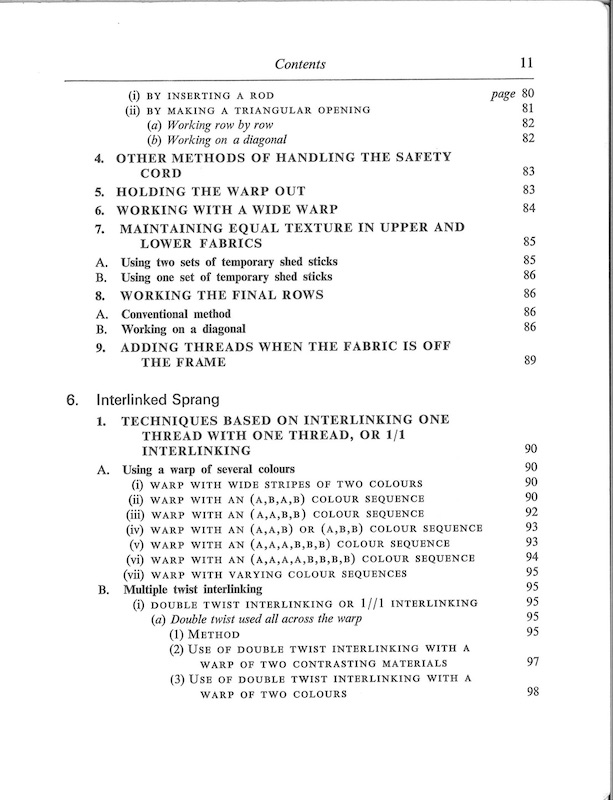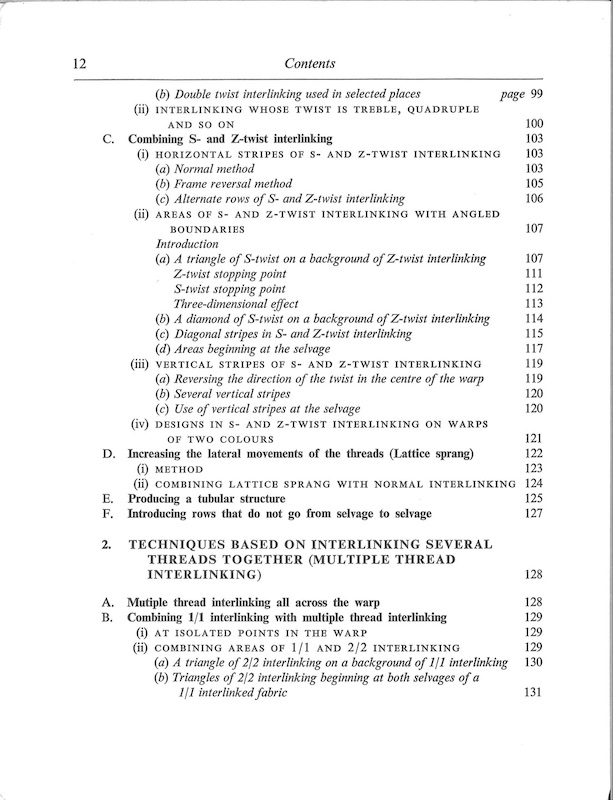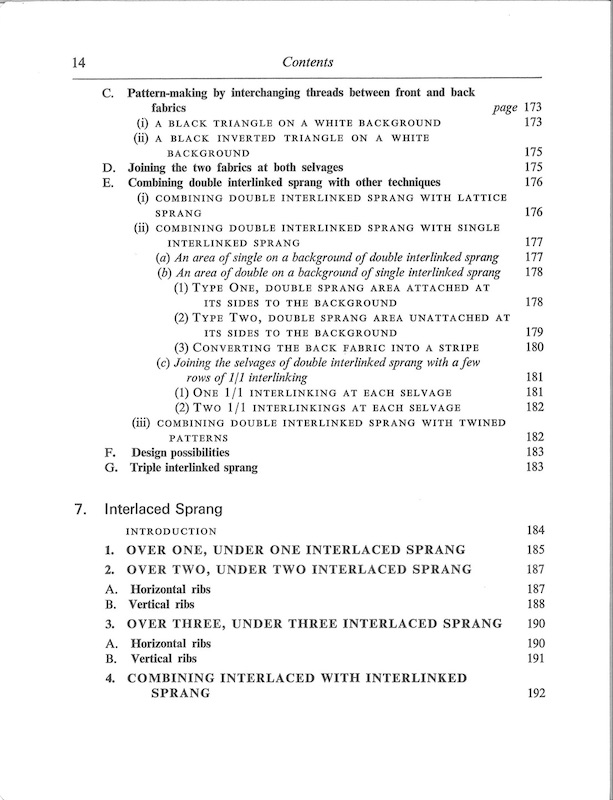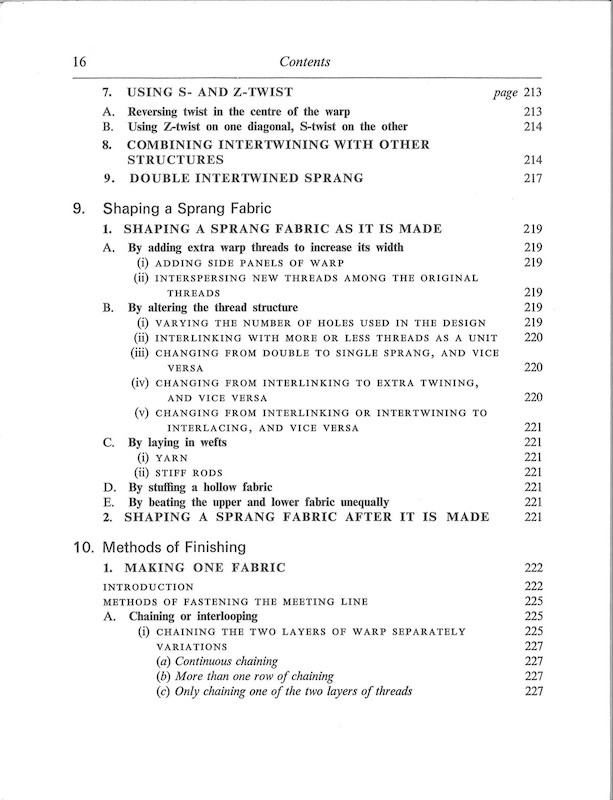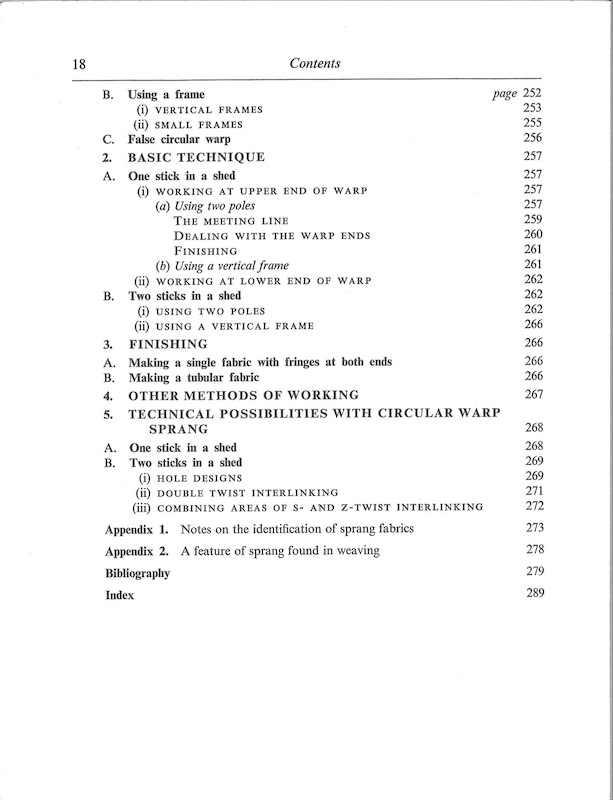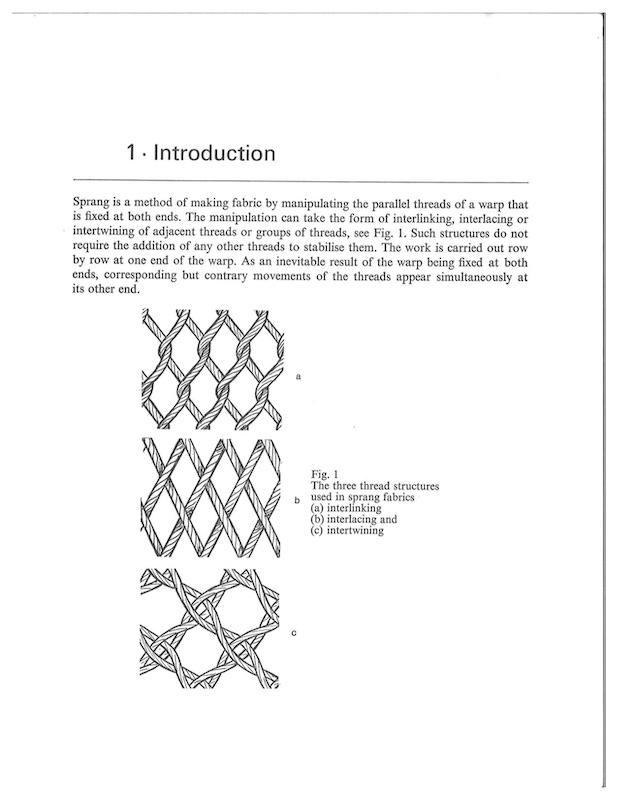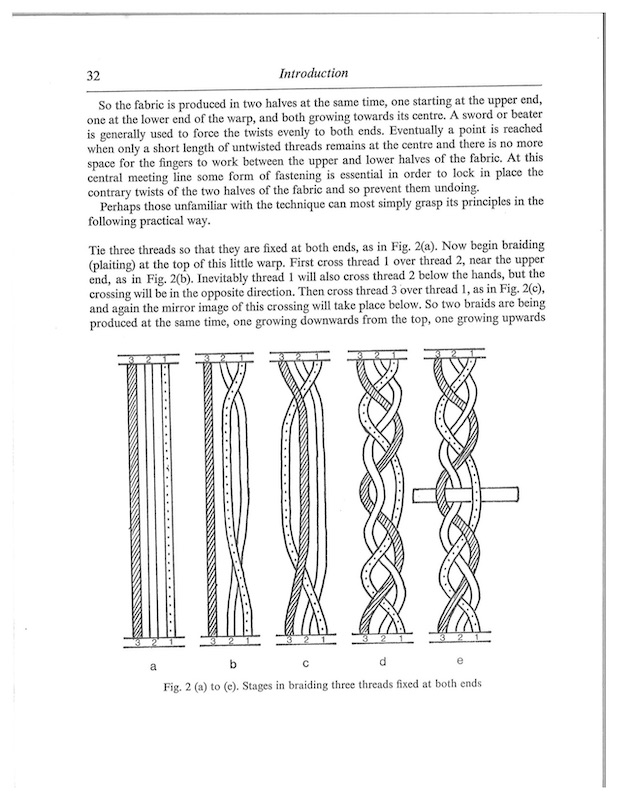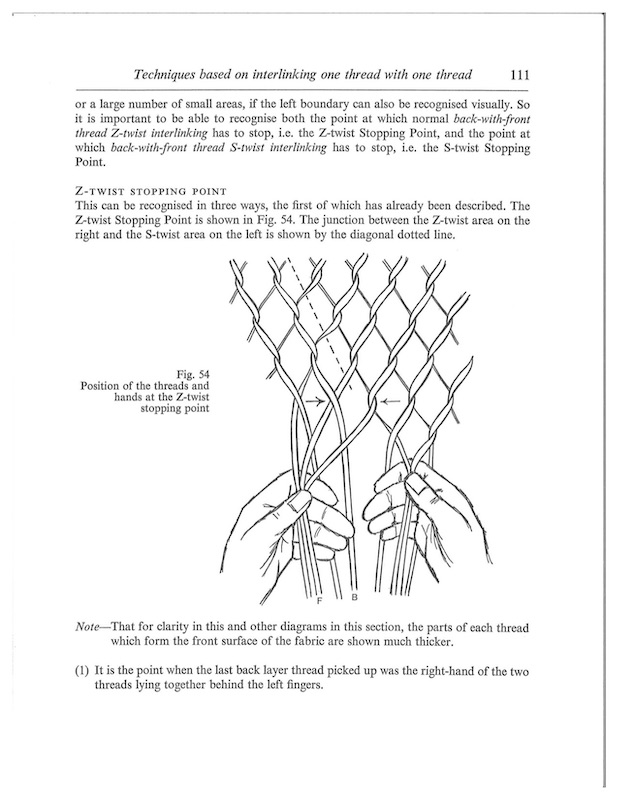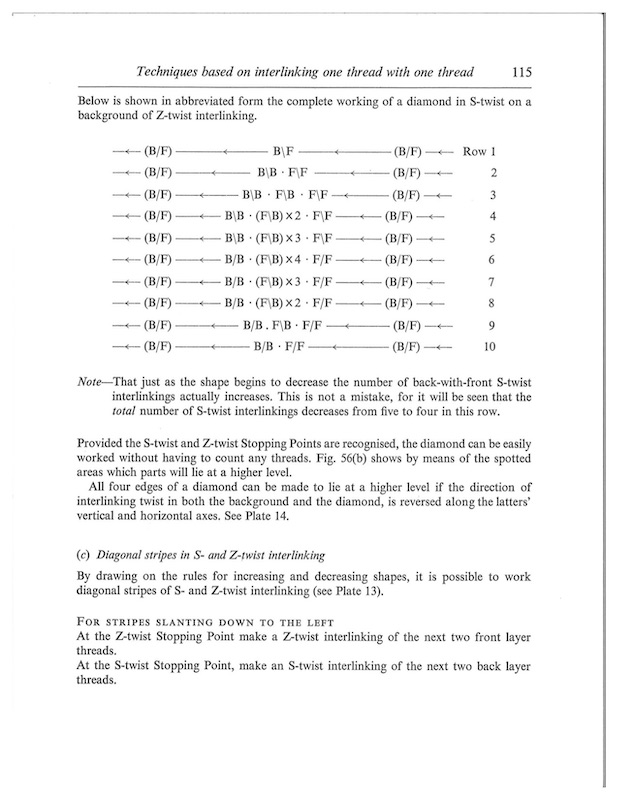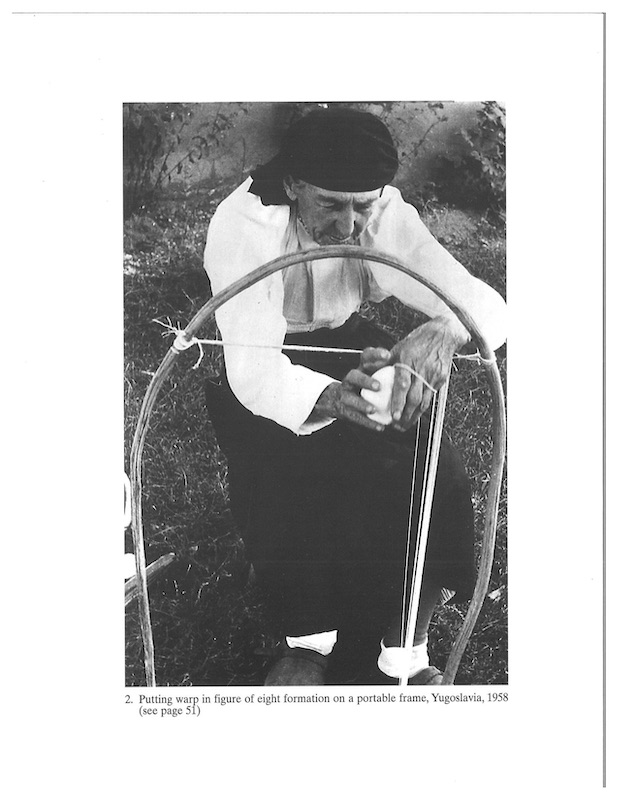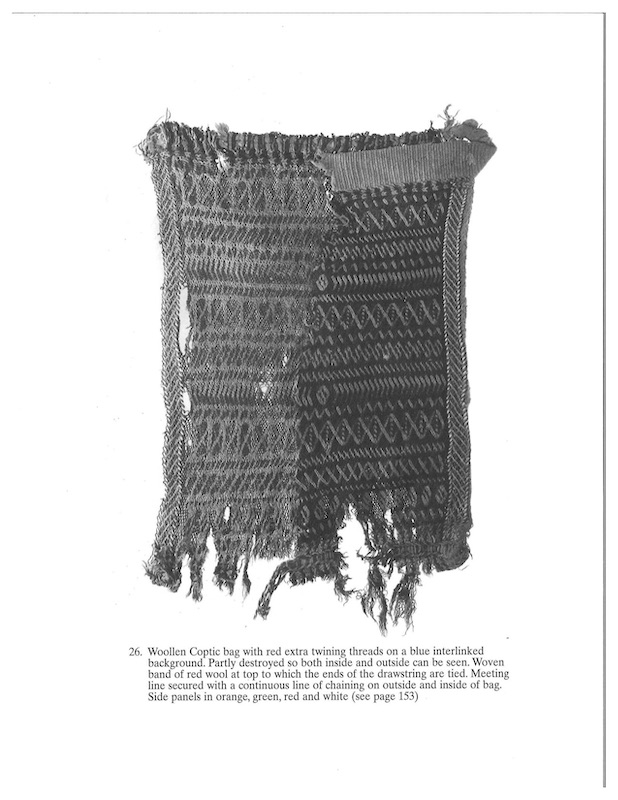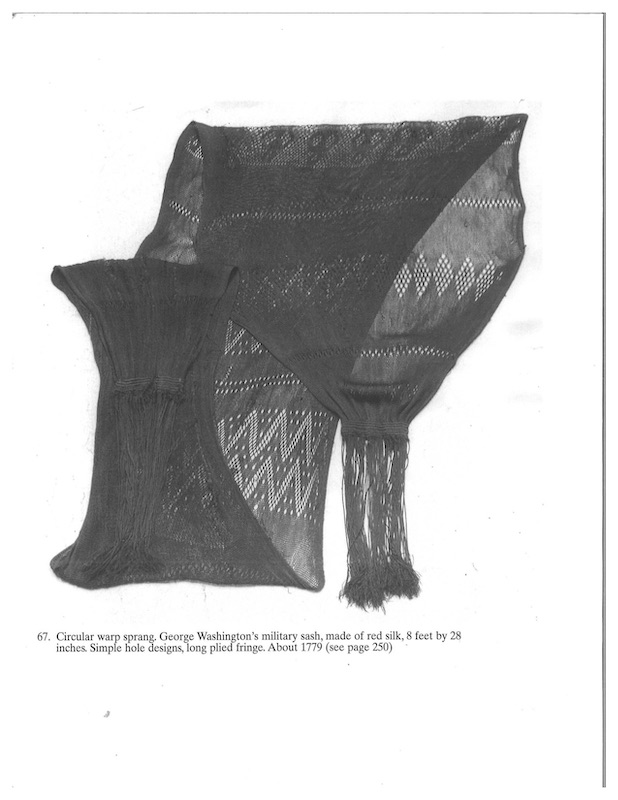
|
The Techniques of Sprang by Peter CollingwoodPlaiting on Stretched ThreadsAnyone who has worked with any of Peter Collingwood’s texts or who was lucky enough to study with him in person, will have an appreciation of the scope of his writing. His exhaustive research into a particular technique, combined with his ability to analyze structure, and to convey to the reader the methods to recreate these structures is truly remarkable. Techniques of Sprang is a clear example of what Peter Collingwood meant when he said, “the simple is revealed when the complex is exhausted”. The book Techniques of Sprang is no different from his other works. For years this volume has been justly regarded as the primary resource for this technique. The book begins by placing the technique in history. He offers a chronological listing of extant fabrics and equipment, pictures, and written records that are evidence of this technique. The book continues on by describing a number of frames that will support the work, as well as other helpful equipment, and offers suggestions on yarn qualities that lend themselves to the technique. He describes a variety of ways to set up these frames, and also a variety of ways to finish the cloth once made |
|
Sample Pages:
|
|
Collingwood describes the three classes of structures that lend themselves to sprang: interlinking, interlacing, and intertwining. He dedicates one or more chapters to each of these structures, suggesting one or more methods to create each structure, and detailing numerous variations to each structure. The book is amply illustrated with drawings of the structures described. The book features an ample index and bibliography. The bibliography cites numerous references to the technique as well as documents discussing historic sprang textiles.
The book finishes with some 69 black and white photos. These detail individuals working on sprang frames from Moravia, Yugoslavia, Mexico, Rumania, and Pakistan. Also included are photos of a number of pieces of sprang, historic and modern. The caption under each photo includes the page number discussing the pertinent structure.
While this in-depth study may not be a beginners book, to anyone interested exploring sprang techniques to any depth, this book is a “must have”.
| Average rating: | (based on 4 ratings) |




